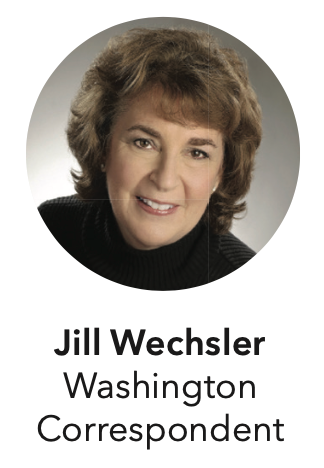FDA Eyes New Strategies to Spur Gene Therapy Development
Agency seeks added resources and new approaches to accelerate more of these promising treatments to the market.

The continued surge in applications to FDA for testing new cellular and gene therapies (CGTs) is taxing the agency’s resources and highlighting the need for new policies and updated operations to fully realize the promise of these advanced treatments. FDA recently authorized accelerated approval for a new amyotrophic lateral sclerosis (ALS) drug, Biogen’s Qalsody (tofersen), based on years of testing to demonstrate the therapy’s potential for blocking production of a protein believed to give rise to ALS in some 500 of about 30,000 ALS patients with a specific gene mutation.1 Meanwhile, bluebird bio is seeking approval of a new treatment for a certain form of sickle cell disease (SCD), a lovo-cel gene therapy that is injected into the patient’s blood to produce anti-sickling hemoglobin.2
To further such advances, officials in the Center for Biologics Evaluation and Research (CBER) seek added resources and new approaches for quickly bringing innovative therapies to patients. In numerous presentations in recent months, CBER Director Peter Marks has lamented the slow pace and high cost of developing and testing new gene therapies. FDA has approved about a dozen of these treatments so far, he pointed out in a webinar last month sponsored by the Alliance for a Stronger FDA.3 But after two decades of effort in this area, he urged changes to approve more than a handful of new products each year. “I don’t think we have a really long time to play around,” Marks commented, but need to “transform the environment” for developing these treatments through accelerated endpoints and regulatory flexibility.
One recent change is the formation of a new “super” Office of Therapeutic Products (OTP) in CBER to replace the smaller Office of Tissues and Advanced Therapies (OTAT). OTP has six offices overseeing 14 divisions and 33 branches, designed to house an expanded staff able to quickly assess new research programs and steer promising therapies through the regulatory process. The latest version of the user fee program for drugs and biologics provides added funding to support an increase in experts assigned to gene therapies, advanced manufacturing technologies, and related programs.4
Marks also has proposed that CBER adopt some of the innovations established by FDA’s Oncology Center of Excellence (OCE), including FDA’s accelerated approval pathway for promising therapies. While acknowledging that not all fast approvals will confirm benefits later, he is optimistic that this approach can provide many seriously ill patients with access to important treatments faster than otherwise. A related plan is to launch a new version of Operation Warp Speed for rare diseases to support the development of gene therapies for conditions affecting small patient populations, starting with a few high-need programs that could benefit from more constant contact with FDA.
In addition, CBER is working to advance international cooperation among regulatory authorities in vetting and regulating new gene therapy applications to expand the global pool of patients testing and receiving treatment. This involves applying elements of OCE’s Project Orbis program to provide a framework for regulators to cooperate in reviewing concurrent submissions for biotech products outside the oncology area.
Modernizing production
The high cost of producing GTs for small patient populations, however, presents the highest hurdle for CBER and manufacturers to bring more innovative gene therapies to patients. While FDA doesn’t consider cost in assessing the safety and efficacy of a medicine for market approval, Marks has voiced concerns about the long timeframe and expensive methods for producing treatments for only 30 to 40 patients a year—a process that he recognizes is very different from manufacturing monoclonal antibodies for thousands of people. Some gene therapies make it through clinical development, he noted, only to be dropped by sponsors due to high production costs that make these new treatments “commercially non-viable” and put clinical trial sponsorship out of reach of small companies and nonprofit disease organizations and foundations.
A priority for Marks is to reduce the bottlenecks in GT production processes and to provide added assistance to sponsors struggling with manufacturing issues. The expanded OTP has three chemistry, manufacturing, and controls (CMC) offices—for gene therapy, cell therapy and human tissue, and for plasma protein therapeutics—to accommodate more staffers with expertise in biotech manufacturing able to provide timely, accurate information in the this area.
CBER also has scheduled virtual “town hall” meetings for OTP staffers to clarify expectations on specific technical components required for investigational and market applications for CGTs. At presentations in September 2022 and in April, reviewers from OTP’s Office of Gene Therapy CMC addressed questions on guidance documents, assay qualification and validation, product characterization and release testing, and stability studies at different stages of product development and use.5 Another session on June 8 will focus on CMC for cellular and tissue products.6
Marks sees a two-to-three-year window to move forward and transform the environment and manufacturing process for CGTs. Under current methods, these new products will continue to raise challenges in the cost and pricing arena, as seen in Biogen’s price tag for its new ALS drug of almost $200,000 a year for treatment. “If we get it right,” says Marks, FDA will realize some of its goals for advancing gene therapies, which will make a “huge difference in the bio-economy,” while also impacting patients’ lives.
References
- https://www.fda.gov/drugs/news-events-human-drugs/fda-approves-treatment-amyotrophic-lateral-sclerosis-associated-mutation-sod1-gene
- https://investor.bluebirdbio.com/news-releases/news-release-details/bluebird-bio-submits-biologics-license-application-bla-fda-0
- https://acrobat.adobe.com/id/urn:aaid:sc:VA6C2:75ca49a1-420f-4cc4-800a-8cace64e1d51?viewer%21megaVerb=group-discover
- https://www.fda.gov/vaccines-blood-biologics/cellular-gene-therapy-products/establishment-office-therapeutic-products
- https://www.fda.gov/news-events/fda-meetings-conferences-and-workshops/otp-town-hall-gene-therapy-chemistry-manufacturing-and-controls-april-2023-04252023
- https://www.fda.gov/news-events/fda-meetings-conferences-and-workshops/otp-town-hall-cell-therapy-chemistry-manufacturing-and-controls-june-2023-06082023
